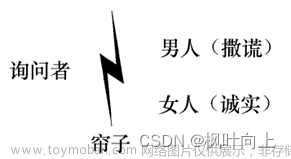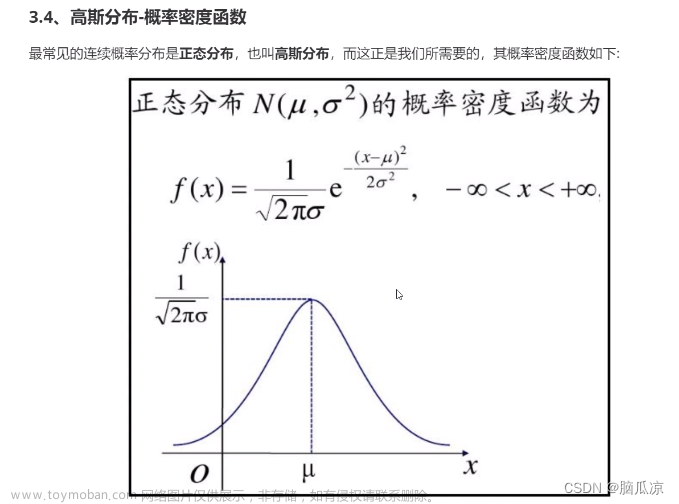论文地址:https://arxiv.org/abs/2203.04967
代码地址:hhttps://link.zhihu.com/?target=https%3A//github.com/jeya-maria-jose/UNeXt-pytorch
1.是什么?
UNeXt是约翰霍普金斯大学在2022年发布的论文。它在早期阶段使用卷积,在潜在空间阶段使用 MLP。通过一个标记化的 MLP 块来标记和投影卷积特征,并使用 MLP 对表示进行建模。对输入通道进行移位,可以专注于学习局部依赖性。
2.为什么?
近年来,UNet及其最新扩展如TransUNet已成为领先的医学图像分割方法。然而,由于这些网络参数多、计算复杂且使用速度慢,因此不能有效地用于即时护理应用中的快速图像分割。为此,我们提出了一种基于卷积多层感知器(MLP)的图像分割网络UNeXt。我们以一种有效的方式设计了UNeXt,其中包s和潜伏阶段的MLP阶段。我们提出了一个标记化(切片)的MLP块,我们有效地标记和投影(关联)卷积特征,并使用MLP来建模表示。为了进一步提高性能,我们建议在向mlp输入的同时改变输入的通道,以便专注于学习局部依赖关系。在潜在空间中使用标记化mlp减少了参数的数量和计算复杂性,同时能够产生更好的表示来帮助分割。该网络还包括各级编码器和解码器之间的跳过连接。我们在多个医学图像分割数据集上对UNeXt进行了测试,结果表明我们将参数数量减少了72倍,计算复杂度降低了68倍,推理速度提高了10倍,同时也获得了比目前最先进的医学图像分割架构更好的分割性能
3.怎么样?
3.1网络结构
UNeXt是一个编码器-解码器架构,有两个阶段:1)卷积阶段,和2)标记化MLP阶段。输入图像通过编码器,其中前3个块是卷积的,接下来的2个是Tokenized MLP块。解码器有2个Tokenized MLP块,后面跟着3个卷积块。每个编码器块将特征分辨率降低2,每个解码器块将特征分辨率提高2。
跳过连接是也包括在编码器和解码器之间。每个块上的通道数是一个超参数,表示为C1到C5。对于使用UNeXt架构的实验,除非另有说明,否则我们遵循C1 = 32, C2 = 64, C3 = 128, C4 = 160和C5 = 256。请注意,这些数字实际上小于UNet及其变体的过滤器数量,这有助于减少参数和计算的第一个更改。

3.2原理分析
3.2.1卷积阶段
有三个卷积块,每个卷积块配备一个卷积层,一个批处理归一化层和ReLU激活。我们使用内核大小为3 × 3, stride为1,padding为1。编码器中的转换块使用池窗口为2 × 2的最大池化层,而解码器中的转换块由双线性插值层组成,用于对特征映射进行上采样。我们使用双线性插值代替转置卷积,因为转置卷积基本上是可学习的上采样,并有助于获得更多可学习的参数。
3.2.2 Shifted MLP
在移位MLP中,我们首先在标记之前移动卷积特征的通道轴。这有助于MLP只关注conv特征的某些位置,从而诱导块的局域性。这里的直觉类似于Swin transformer[5],其中引入了基于窗口的注意力,为完全全局的模型添加了更多的局部性。由于Tokenized MLP块有2个MLP,我们像轴向注意一样,在一个块中跨宽度移动特征,在另一个块中跨高度移动特征[24]。我们把这些特征分成h个不同的,根据指定的轴对它们进行分区并移动j个位置。这有助于我们创建沿轴引入局部性的随机窗口。我们把这些特征分成h个不同的部分,并根据指定的轴移动它们j个位置。这有助于我们创建沿轴引入局部性的随机窗口

3.2.3 Tokenized MLP
在标记化的MLP块中,我们首先转移特征并将其投影到标记中。为了标记化,我们首先使用内核大小为3,并将通道数更改为E,其中E是嵌入维度(标记数),这是一个超参数。然后,我们将这些令牌传递给移位的MLP(跨宽度),其中MLP的隐藏维度是超参数h。
接下来,这些特征通过深度卷积层(DWConv)传递。我们在这个块中使用DWConv有两个原因:
1)它有助于编码MLP特征的位置信息。文献[26]表明,MLP块中的Conv层足以对位置信息进行编码,并且实际上比标准的位置编码技术性能更好。当测试和训练分辨率不相同时,需要插入像ViT中的位置编码技术,这通常会导致性能下降。
2) DWConv使用较少的参数,因此提高了效率。然后我们使用GELU[12]激活层。我们使用GELU而不是RELU,因为它是一个更平滑的选择,并且发现它的性能更好。此外,像ViT[10]和BERT[9]这样的最新架构已经成功地使用了GELU来获得改进的结果。然后,我们通过另一个移位的MLP(跨高度)传递特征,该MLP将维度从H转换为o。
我们在这里使用残差连接并添加原始标记作为残差。然后我们应用层归一化(LN)并将输出特征传递给下一个块。LN比BN更受欢迎,因为沿着令牌进行规范化比在token化的MLP块中跨批进行规范化更有意义。
token化MLP块中的计算可以总结为:
X shift = Shift W (X);T W = Tokenize(X shift ), (1)
Y = f(DWConv((MLP(T W )))), (2)
Y shift = Shift H (Y );T H = Tokenize(Y shift ), (3)
Y = f(LN(T W + MLP(GELU(T H )))), (4)
其中T为令牌,H为高度,W为宽度,DW Conv为深度卷积,LN为层归一化。请注意,所有这些计算都是在嵌入维数H上进行的,这明显小于特征映射的维数H /N × H/ N,其中N是取决于块的2倍。在我们的实验中,除非另有说明,否则我们将H设为768。这种设计Tokenized MLP块的方法有助于编码有意义的特征信息,并且在计算或参数方面贡献不大。
3.3代码实现
import torch
from torch import nn
import torch
import torchvision
from torch import nn
from torch.autograd import Variable
from torch.utils.data import DataLoader
from torchvision import transforms
from torchvision.utils import save_image
import torch.nn.functional as F
import os
import matplotlib.pyplot as plt
from utils import *
__all__ = ['UNext']
import timm
from timm.models.layers import DropPath, to_2tuple, trunc_normal_
import types
import math
from abc import ABCMeta, abstractmethod
from mmcv.cnn import ConvModule
import pdb
def conv1x1(in_planes: int, out_planes: int, stride: int = 1) -> nn.Conv2d:
"""1x1 convolution"""
return nn.Conv2d(in_planes, out_planes, kernel_size=1, stride=1, bias=False)
def shift(dim):
x_shift = [ torch.roll(x_c, shift, dim) for x_c, shift in zip(xs, range(-self.pad, self.pad+1))]
x_cat = torch.cat(x_shift, 1)
x_cat = torch.narrow(x_cat, 2, self.pad, H)
x_cat = torch.narrow(x_cat, 3, self.pad, W)
return x_cat
class shiftmlp(nn.Module):
def __init__(self, in_features, hidden_features=None, out_features=None, act_layer=nn.GELU, drop=0., shift_size=5):
super().__init__()
out_features = out_features or in_features
hidden_features = hidden_features or in_features
self.dim = in_features
self.fc1 = nn.Linear(in_features, hidden_features)
self.dwconv = DWConv(hidden_features)
self.act = act_layer()
self.fc2 = nn.Linear(hidden_features, out_features)
self.drop = nn.Dropout(drop)
self.shift_size = shift_size
self.pad = shift_size // 2
self.apply(self._init_weights)
def _init_weights(self, m):
if isinstance(m, nn.Linear):
trunc_normal_(m.weight, std=.02)
if isinstance(m, nn.Linear) and m.bias is not None:
nn.init.constant_(m.bias, 0)
elif isinstance(m, nn.LayerNorm):
nn.init.constant_(m.bias, 0)
nn.init.constant_(m.weight, 1.0)
elif isinstance(m, nn.Conv2d):
fan_out = m.kernel_size[0] * m.kernel_size[1] * m.out_channels
fan_out //= m.groups
m.weight.data.normal_(0, math.sqrt(2.0 / fan_out))
if m.bias is not None:
m.bias.data.zero_()
# def shift(x, dim):
# x = F.pad(x, "constant", 0)
# x = torch.chunk(x, shift_size, 1)
# x = [ torch.roll(x_c, shift, dim) for x_s, shift in zip(x, range(-pad, pad+1))]
# x = torch.cat(x, 1)
# return x[:, :, pad:-pad, pad:-pad]
def forward(self, x, H, W):
# pdb.set_trace()
B, N, C = x.shape
xn = x.transpose(1, 2).view(B, C, H, W).contiguous()
xn = F.pad(xn, (self.pad, self.pad, self.pad, self.pad) , "constant", 0)
xs = torch.chunk(xn, self.shift_size, 1)
x_shift = [torch.roll(x_c, shift, 2) for x_c, shift in zip(xs, range(-self.pad, self.pad+1))]
x_cat = torch.cat(x_shift, 1)
x_cat = torch.narrow(x_cat, 2, self.pad, H)
x_s = torch.narrow(x_cat, 3, self.pad, W)
x_s = x_s.reshape(B,C,H*W).contiguous()
x_shift_r = x_s.transpose(1,2)
x = self.fc1(x_shift_r)
x = self.dwconv(x, H, W)
x = self.act(x)
x = self.drop(x)
xn = x.transpose(1, 2).view(B, C, H, W).contiguous()
xn = F.pad(xn, (self.pad, self.pad, self.pad, self.pad) , "constant", 0)
xs = torch.chunk(xn, self.shift_size, 1)
x_shift = [torch.roll(x_c, shift, 3) for x_c, shift in zip(xs, range(-self.pad, self.pad+1))]
x_cat = torch.cat(x_shift, 1)
x_cat = torch.narrow(x_cat, 2, self.pad, H)
x_s = torch.narrow(x_cat, 3, self.pad, W)
x_s = x_s.reshape(B,C,H*W).contiguous()
x_shift_c = x_s.transpose(1,2)
x = self.fc2(x_shift_c)
x = self.drop(x)
return x
class shiftedBlock(nn.Module):
def __init__(self, dim, num_heads, mlp_ratio=4., qkv_bias=False, qk_scale=None, drop=0., attn_drop=0.,
drop_path=0., act_layer=nn.GELU, norm_layer=nn.LayerNorm, sr_ratio=1):
super().__init__()
self.drop_path = DropPath(drop_path) if drop_path > 0. else nn.Identity()
self.norm2 = norm_layer(dim)
mlp_hidden_dim = int(dim * mlp_ratio)
self.mlp = shiftmlp(in_features=dim, hidden_features=mlp_hidden_dim, act_layer=act_layer, drop=drop)
self.apply(self._init_weights)
def _init_weights(self, m):
if isinstance(m, nn.Linear):
trunc_normal_(m.weight, std=.02)
if isinstance(m, nn.Linear) and m.bias is not None:
nn.init.constant_(m.bias, 0)
elif isinstance(m, nn.LayerNorm):
nn.init.constant_(m.bias, 0)
nn.init.constant_(m.weight, 1.0)
elif isinstance(m, nn.Conv2d):
fan_out = m.kernel_size[0] * m.kernel_size[1] * m.out_channels
fan_out //= m.groups
m.weight.data.normal_(0, math.sqrt(2.0 / fan_out))
if m.bias is not None:
m.bias.data.zero_()
def forward(self, x, H, W):
x = x + self.drop_path(self.mlp(self.norm2(x), H, W))
return x
class DWConv(nn.Module):
def __init__(self, dim=768):
super(DWConv, self).__init__()
self.dwconv = nn.Conv2d(dim, dim, 3, 1, 1, bias=True, groups=dim)
def forward(self, x, H, W):
B, N, C = x.shape
x = x.transpose(1, 2).view(B, C, H, W)
x = self.dwconv(x)
x = x.flatten(2).transpose(1, 2)
return x
class OverlapPatchEmbed(nn.Module):
""" Image to Patch Embedding
"""
def __init__(self, img_size=224, patch_size=7, stride=4, in_chans=3, embed_dim=768):
super().__init__()
img_size = to_2tuple(img_size)
patch_size = to_2tuple(patch_size)
self.img_size = img_size
self.patch_size = patch_size
self.H, self.W = img_size[0] // patch_size[0], img_size[1] // patch_size[1]
self.num_patches = self.H * self.W
self.proj = nn.Conv2d(in_chans, embed_dim, kernel_size=patch_size, stride=stride,
padding=(patch_size[0] // 2, patch_size[1] // 2))
self.norm = nn.LayerNorm(embed_dim)
self.apply(self._init_weights)
def _init_weights(self, m):
if isinstance(m, nn.Linear):
trunc_normal_(m.weight, std=.02)
if isinstance(m, nn.Linear) and m.bias is not None:
nn.init.constant_(m.bias, 0)
elif isinstance(m, nn.LayerNorm):
nn.init.constant_(m.bias, 0)
nn.init.constant_(m.weight, 1.0)
elif isinstance(m, nn.Conv2d):
fan_out = m.kernel_size[0] * m.kernel_size[1] * m.out_channels
fan_out //= m.groups
m.weight.data.normal_(0, math.sqrt(2.0 / fan_out))
if m.bias is not None:
m.bias.data.zero_()
def forward(self, x):
x = self.proj(x)
_, _, H, W = x.shape
x = x.flatten(2).transpose(1, 2)
x = self.norm(x)
return x, H, W
class UNext(nn.Module):
## Conv 3 + MLP 2 + shifted MLP
def __init__(self, num_classes, input_channels=3, deep_supervision=False,img_size=224, patch_size=16, in_chans=3, embed_dims=[ 128, 160, 256],
num_heads=[1, 2, 4, 8], mlp_ratios=[4, 4, 4, 4], qkv_bias=False, qk_scale=None, drop_rate=0.,
attn_drop_rate=0., drop_path_rate=0., norm_layer=nn.LayerNorm,
depths=[1, 1, 1], sr_ratios=[8, 4, 2, 1], **kwargs):
super().__init__()
self.encoder1 = nn.Conv2d(3, 16, 3, stride=1, padding=1)
self.encoder2 = nn.Conv2d(16, 32, 3, stride=1, padding=1)
self.encoder3 = nn.Conv2d(32, 128, 3, stride=1, padding=1)
self.ebn1 = nn.BatchNorm2d(16)
self.ebn2 = nn.BatchNorm2d(32)
self.ebn3 = nn.BatchNorm2d(128)
self.norm3 = norm_layer(embed_dims[1])
self.norm4 = norm_layer(embed_dims[2])
self.dnorm3 = norm_layer(160)
self.dnorm4 = norm_layer(128)
dpr = [x.item() for x in torch.linspace(0, drop_path_rate, sum(depths))]
self.block1 = nn.ModuleList([shiftedBlock(
dim=embed_dims[1], num_heads=num_heads[0], mlp_ratio=1, qkv_bias=qkv_bias, qk_scale=qk_scale,
drop=drop_rate, attn_drop=attn_drop_rate, drop_path=dpr[0], norm_layer=norm_layer,
sr_ratio=sr_ratios[0])])
self.block2 = nn.ModuleList([shiftedBlock(
dim=embed_dims[2], num_heads=num_heads[0], mlp_ratio=1, qkv_bias=qkv_bias, qk_scale=qk_scale,
drop=drop_rate, attn_drop=attn_drop_rate, drop_path=dpr[1], norm_layer=norm_layer,
sr_ratio=sr_ratios[0])])
self.dblock1 = nn.ModuleList([shiftedBlock(
dim=embed_dims[1], num_heads=num_heads[0], mlp_ratio=1, qkv_bias=qkv_bias, qk_scale=qk_scale,
drop=drop_rate, attn_drop=attn_drop_rate, drop_path=dpr[0], norm_layer=norm_layer,
sr_ratio=sr_ratios[0])])
self.dblock2 = nn.ModuleList([shiftedBlock(
dim=embed_dims[0], num_heads=num_heads[0], mlp_ratio=1, qkv_bias=qkv_bias, qk_scale=qk_scale,
drop=drop_rate, attn_drop=attn_drop_rate, drop_path=dpr[1], norm_layer=norm_layer,
sr_ratio=sr_ratios[0])])
self.patch_embed3 = OverlapPatchEmbed(img_size=img_size // 4, patch_size=3, stride=2, in_chans=embed_dims[0],
embed_dim=embed_dims[1])
self.patch_embed4 = OverlapPatchEmbed(img_size=img_size // 8, patch_size=3, stride=2, in_chans=embed_dims[1],
embed_dim=embed_dims[2])
self.decoder1 = nn.Conv2d(256, 160, 3, stride=1,padding=1)
self.decoder2 = nn.Conv2d(160, 128, 3, stride=1, padding=1)
self.decoder3 = nn.Conv2d(128, 32, 3, stride=1, padding=1)
self.decoder4 = nn.Conv2d(32, 16, 3, stride=1, padding=1)
self.decoder5 = nn.Conv2d(16, 16, 3, stride=1, padding=1)
self.dbn1 = nn.BatchNorm2d(160)
self.dbn2 = nn.BatchNorm2d(128)
self.dbn3 = nn.BatchNorm2d(32)
self.dbn4 = nn.BatchNorm2d(16)
self.final = nn.Conv2d(16, num_classes, kernel_size=1)
self.soft = nn.Softmax(dim =1)
def forward(self, x):
B = x.shape[0]
### Encoder
### Conv Stage
### Stage 1
out = F.relu(F.max_pool2d(self.ebn1(self.encoder1(x)),2,2))
t1 = out
### Stage 2
out = F.relu(F.max_pool2d(self.ebn2(self.encoder2(out)),2,2))
t2 = out
### Stage 3
out = F.relu(F.max_pool2d(self.ebn3(self.encoder3(out)),2,2))
t3 = out
### Tokenized MLP Stage
### Stage 4
out,H,W = self.patch_embed3(out)
for i, blk in enumerate(self.block1):
out = blk(out, H, W)
out = self.norm3(out)
out = out.reshape(B, H, W, -1).permute(0, 3, 1, 2).contiguous()
t4 = out
### Bottleneck
out ,H,W= self.patch_embed4(out)
for i, blk in enumerate(self.block2):
out = blk(out, H, W)
out = self.norm4(out)
out = out.reshape(B, H, W, -1).permute(0, 3, 1, 2).contiguous()
### Stage 4
out = F.relu(F.interpolate(self.dbn1(self.decoder1(out)),scale_factor=(2,2),mode ='bilinear'))
out = torch.add(out,t4)
_,_,H,W = out.shape
out = out.flatten(2).transpose(1,2)
for i, blk in enumerate(self.dblock1):
out = blk(out, H, W)
### Stage 3
out = self.dnorm3(out)
out = out.reshape(B, H, W, -1).permute(0, 3, 1, 2).contiguous()
out = F.relu(F.interpolate(self.dbn2(self.decoder2(out)),scale_factor=(2,2),mode ='bilinear'))
out = torch.add(out,t3)
_,_,H,W = out.shape
out = out.flatten(2).transpose(1,2)
for i, blk in enumerate(self.dblock2):
out = blk(out, H, W)
out = self.dnorm4(out)
out = out.reshape(B, H, W, -1).permute(0, 3, 1, 2).contiguous()
out = F.relu(F.interpolate(self.dbn3(self.decoder3(out)),scale_factor=(2,2),mode ='bilinear'))
out = torch.add(out,t2)
out = F.relu(F.interpolate(self.dbn4(self.decoder4(out)),scale_factor=(2,2),mode ='bilinear'))
out = torch.add(out,t1)
out = F.relu(F.interpolate(self.decoder5(out),scale_factor=(2,2),mode ='bilinear'))
return self.final(out)
class UNext_S(nn.Module):
## Conv 3 + MLP 2 + shifted MLP w less parameters
def __init__(self, num_classes, input_channels=3, deep_supervision=False,img_size=224, patch_size=16, in_chans=3, embed_dims=[32, 64, 128, 512],
num_heads=[1, 2, 4, 8], mlp_ratios=[4, 4, 4, 4], qkv_bias=False, qk_scale=None, drop_rate=0.,
attn_drop_rate=0., drop_path_rate=0., norm_layer=nn.LayerNorm,
depths=[1, 1, 1], sr_ratios=[8, 4, 2, 1], **kwargs):
super().__init__()
self.encoder1 = nn.Conv2d(3, 8, 3, stride=1, padding=1)
self.encoder2 = nn.Conv2d(8, 16, 3, stride=1, padding=1)
self.encoder3 = nn.Conv2d(16, 32, 3, stride=1, padding=1)
self.ebn1 = nn.BatchNorm2d(8)
self.ebn2 = nn.BatchNorm2d(16)
self.ebn3 = nn.BatchNorm2d(32)
self.norm3 = norm_layer(embed_dims[1])
self.norm4 = norm_layer(embed_dims[2])
self.dnorm3 = norm_layer(64)
self.dnorm4 = norm_layer(32)
dpr = [x.item() for x in torch.linspace(0, drop_path_rate, sum(depths))]
self.block1 = nn.ModuleList([shiftedBlock(
dim=embed_dims[1], num_heads=num_heads[0], mlp_ratio=1, qkv_bias=qkv_bias, qk_scale=qk_scale,
drop=drop_rate, attn_drop=attn_drop_rate, drop_path=dpr[0], norm_layer=norm_layer,
sr_ratio=sr_ratios[0])])
self.block2 = nn.ModuleList([shiftedBlock(
dim=embed_dims[2], num_heads=num_heads[0], mlp_ratio=1, qkv_bias=qkv_bias, qk_scale=qk_scale,
drop=drop_rate, attn_drop=attn_drop_rate, drop_path=dpr[1], norm_layer=norm_layer,
sr_ratio=sr_ratios[0])])
self.dblock1 = nn.ModuleList([shiftedBlock(
dim=embed_dims[1], num_heads=num_heads[0], mlp_ratio=1, qkv_bias=qkv_bias, qk_scale=qk_scale,
drop=drop_rate, attn_drop=attn_drop_rate, drop_path=dpr[0], norm_layer=norm_layer,
sr_ratio=sr_ratios[0])])
self.dblock2 = nn.ModuleList([shiftedBlock(
dim=embed_dims[0], num_heads=num_heads[0], mlp_ratio=1, qkv_bias=qkv_bias, qk_scale=qk_scale,
drop=drop_rate, attn_drop=attn_drop_rate, drop_path=dpr[1], norm_layer=norm_layer,
sr_ratio=sr_ratios[0])])
self.patch_embed3 = OverlapPatchEmbed(img_size=img_size // 4, patch_size=3, stride=2, in_chans=embed_dims[0],
embed_dim=embed_dims[1])
self.patch_embed4 = OverlapPatchEmbed(img_size=img_size // 8, patch_size=3, stride=2, in_chans=embed_dims[1],
embed_dim=embed_dims[2])
self.decoder1 = nn.Conv2d(128, 64, 3, stride=1,padding=1)
self.decoder2 = nn.Conv2d(64, 32, 3, stride=1, padding=1)
self.decoder3 = nn.Conv2d(32, 16, 3, stride=1, padding=1)
self.decoder4 = nn.Conv2d(16, 8, 3, stride=1, padding=1)
self.decoder5 = nn.Conv2d(8, 8, 3, stride=1, padding=1)
self.dbn1 = nn.BatchNorm2d(64)
self.dbn2 = nn.BatchNorm2d(32)
self.dbn3 = nn.BatchNorm2d(16)
self.dbn4 = nn.BatchNorm2d(8)
self.final = nn.Conv2d(8, num_classes, kernel_size=1)
self.soft = nn.Softmax(dim =1)
def forward(self, x):
B = x.shape[0]
### Encoder
### Conv Stage
### Stage 1
out = F.relu(F.max_pool2d(self.ebn1(self.encoder1(x)),2,2))
t1 = out
### Stage 2
out = F.relu(F.max_pool2d(self.ebn2(self.encoder2(out)),2,2))
t2 = out
### Stage 3
out = F.relu(F.max_pool2d(self.ebn3(self.encoder3(out)),2,2))
t3 = out
### Tokenized MLP Stage
### Stage 4
out,H,W = self.patch_embed3(out)
for i, blk in enumerate(self.block1):
out = blk(out, H, W)
out = self.norm3(out)
out = out.reshape(B, H, W, -1).permute(0, 3, 1, 2).contiguous()
t4 = out
### Bottleneck
out ,H,W= self.patch_embed4(out)
for i, blk in enumerate(self.block2):
out = blk(out, H, W)
out = self.norm4(out)
out = out.reshape(B, H, W, -1).permute(0, 3, 1, 2).contiguous()
### Stage 4
out = F.relu(F.interpolate(self.dbn1(self.decoder1(out)),scale_factor=(2,2),mode ='bilinear'))
out = torch.add(out,t4)
_,_,H,W = out.shape
out = out.flatten(2).transpose(1,2)
for i, blk in enumerate(self.dblock1):
out = blk(out, H, W)
### Stage 3
out = self.dnorm3(out)
out = out.reshape(B, H, W, -1).permute(0, 3, 1, 2).contiguous()
out = F.relu(F.interpolate(self.dbn2(self.decoder2(out)),scale_factor=(2,2),mode ='bilinear'))
out = torch.add(out,t3)
_,_,H,W = out.shape
out = out.flatten(2).transpose(1,2)
for i, blk in enumerate(self.dblock2):
out = blk(out, H, W)
out = self.dnorm4(out)
out = out.reshape(B, H, W, -1).permute(0, 3, 1, 2).contiguous()
out = F.relu(F.interpolate(self.dbn3(self.decoder3(out)),scale_factor=(2,2),mode ='bilinear'))
out = torch.add(out,t2)
out = F.relu(F.interpolate(self.dbn4(self.decoder4(out)),scale_factor=(2,2),mode ='bilinear'))
out = torch.add(out,t1)
out = F.relu(F.interpolate(self.decoder5(out),scale_factor=(2,2),mode ='bilinear'))
return self.final(out)参考:文章来源:https://www.toymoban.com/news/detail-822629.html
UNext翻译(UNext基于MLP的医学图像快速分割网络)(有那么一丢丢没看懂)文章来源地址https://www.toymoban.com/news/detail-822629.html
到了这里,关于transformer优化(一)-UNeXt 学习笔记的文章就介绍完了。如果您还想了解更多内容,请在右上角搜索TOY模板网以前的文章或继续浏览下面的相关文章,希望大家以后多多支持TOY模板网!













